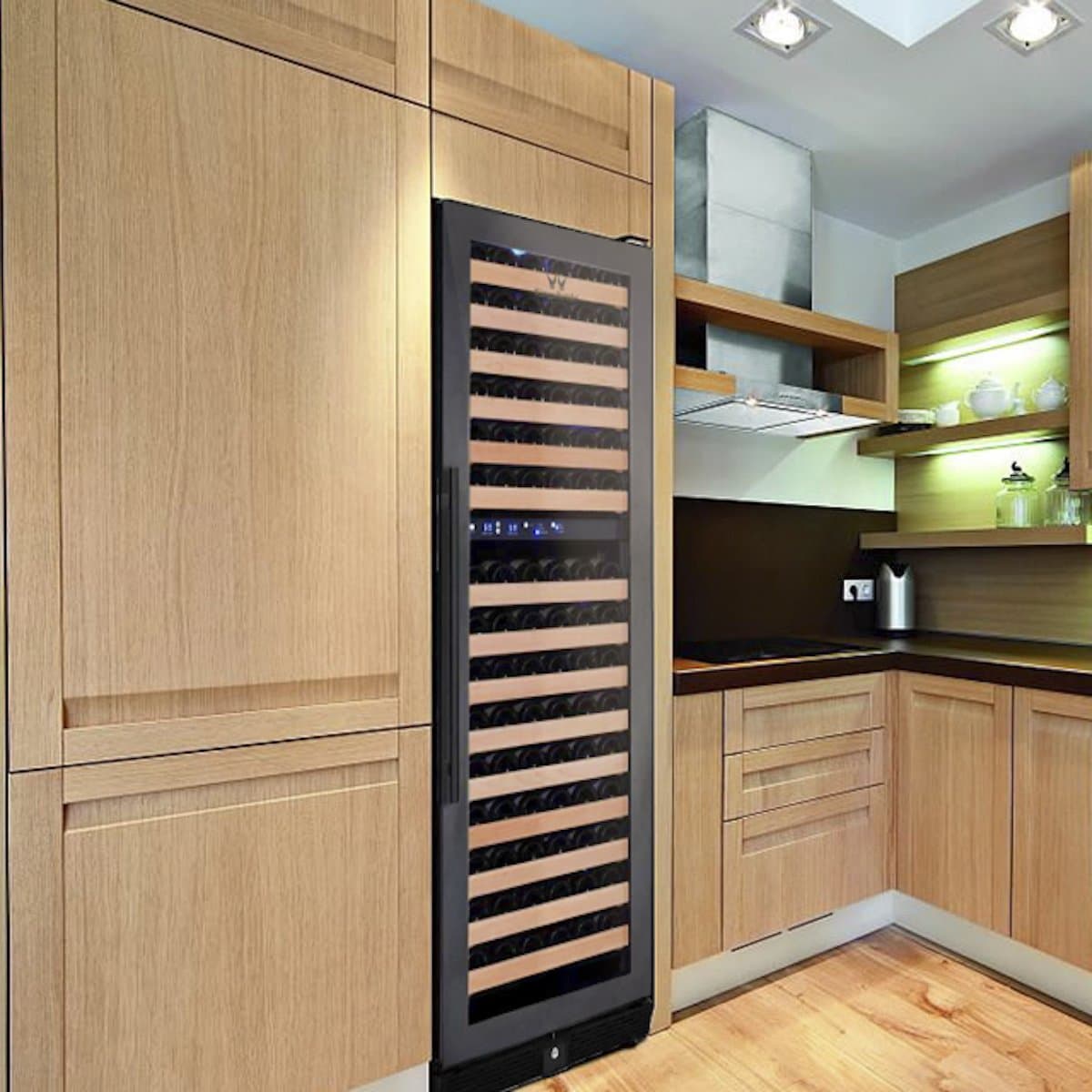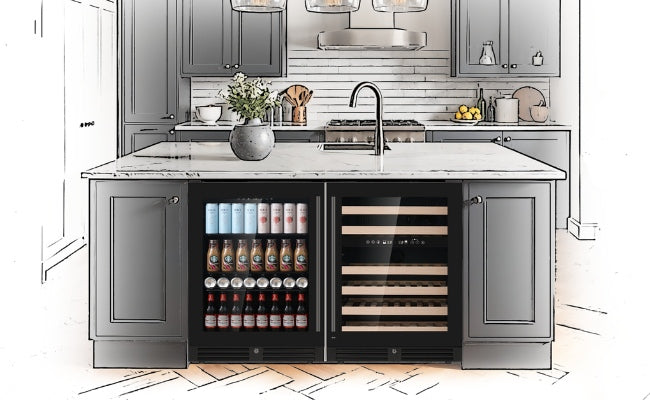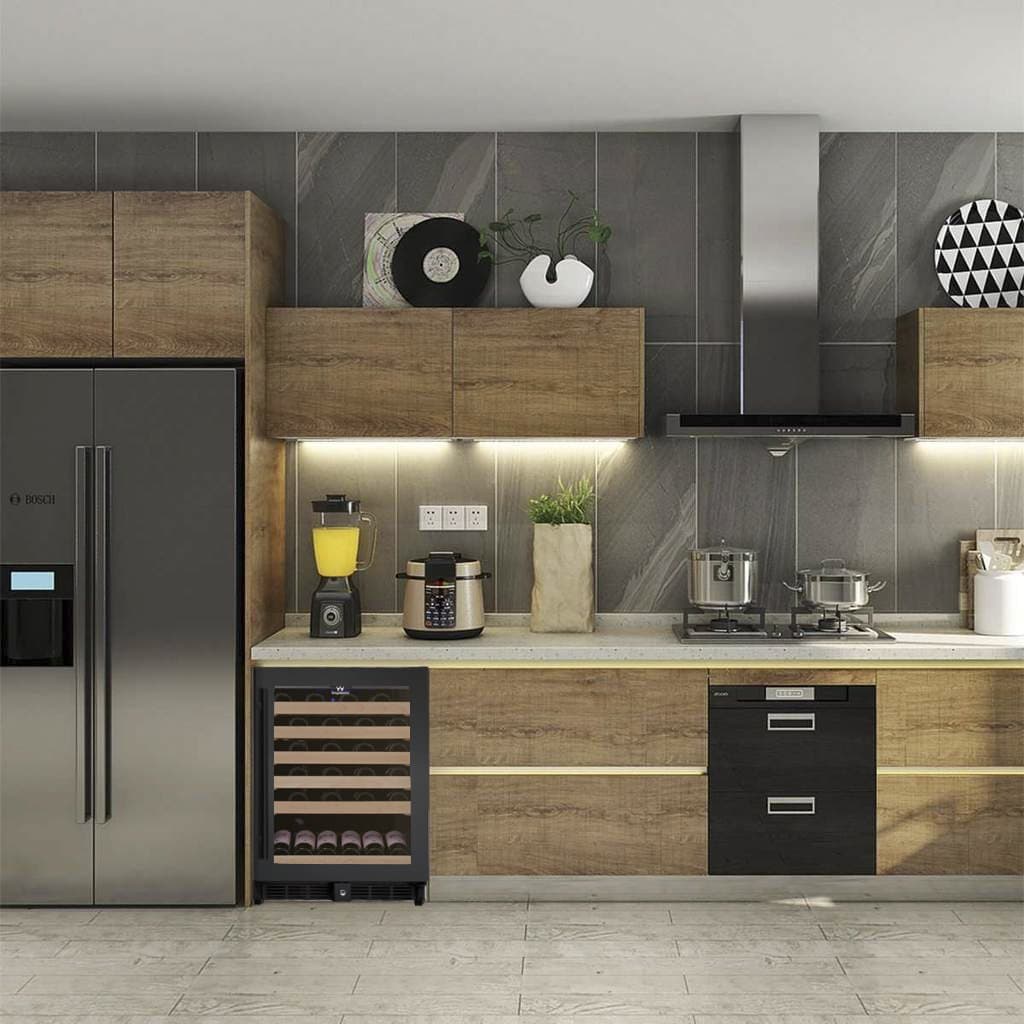
How Exactly Does A Wine Fridge Work?
Anyone who is serious about wine needs to have their own wine fridge. But choosing the right one can be difficult. Understanding how they work can help you to make that decision, and also give you some insight into exactly what you are buying.
Compressor Vs Electric
There are two types of wine fridge that you can buy today: the compressor type and the electric type. Each works a little differently and has its own advantages and drawbacks. Compressor wine fridges work in a similar way to a conventional fridge. Electric fridges are more common these days and are more popular than the compressor variety.
Compression Cooling
A compression cooler utilizes a special liquid called a refrigerant. The refrigerant is circulated around the back of the fridge using a compressor system. The compressor compresses the refrigerant, which is a gas, raising its temperature and pushing it through the metal coils on the back of the refrigerator. The hot refrigerant gas cools to the temperature of the kitchen, turns back into liquid refrigerant, and flows into the coils inside the fridge.
As the liquid refrigerant flows through the coils, it expands. The more surface area the refrigerant has, the more heat it can absorb from the surrounding air, cooling the interior of the fridge and raising the temperature of the refrigerant. It then flows back to the compressor to restart the process.
Thermoelectric Cooling
Thermoelectric coolers are more common today. Most residential wine fridges are electric, owing to their smaller size and quieter operation. A thermoelectric fridge utilizes something called the Peltier effect. The Peltier effect doesn’t require any refrigerant or other chemicals, it works entirely by using electricity to exploit a natural phenomenon. Passing an electric charge through two pieces of metal that are joined together creates a transfer of heat from one side to the other, known as heat flux.
The hotter one side gets, the colder the other side gets. By attaching a heatsink to the hot side, heat can be dissipated more efficiently and so more heat can be drawn from the cold side, thus reducing the temperature further than would otherwise be possible. The heat sinks used in wine fridges are similar to the ones you’ll find inside your computer. They consist of aluminum fins, which are efficient heat conductors, and a fan to provide further cooling and enable the fins to absorb more heat from the plate.
Choosing The Right One
Compressor fridges are able to achieve much lower temperatures. However, they are noisy when in operation. Some people prefer compressor fridges because they can be used to store other things as well, like food for the long-term. Most wine fridges for homes and bars are of the electric type, which runs much quieter. Electric fridges are also more environmentally friendly as they don’t require any refrigerant. Whichever one you go with you will have plenty of options to choose from. Temperature Sensei wrote a great article on wine coolers and why you should have one, to make it a little easier for you.
Whichever type of fridge you go with, understanding how they work is always helpful. The underlying mechanics of a wine fridge are much easier to understand than many people realize.








